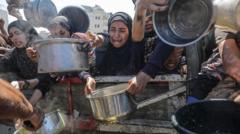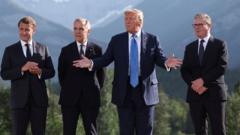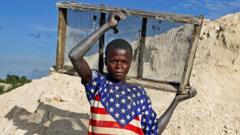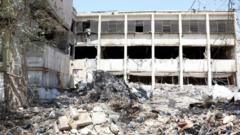U.S. intelligence suggests that Iran's 880-pound stockpile of enriched uranium may pose a future threat, despite recent military efforts to limit its nuclear program. The complexities surrounding its whereabouts and potential military uses continue to unfold.
**Iran's Nuclear Dilemma: Enrichment Stockpile's Fate Uncertain After Strikes**

**Iran's Nuclear Dilemma: Enrichment Stockpile's Fate Uncertain After Strikes**
As U.S. and Israeli military actions impact Iran's nuclear capabilities, questions remain about its uranium reserves.
Most recently, intelligence assessments have raised concerns about Iran's enriched uranium reserves as U.S. and Israeli strikes significantly impacted its nuclear facilities. The volatile nature of geopolitical relations has left a significant question hanging: What has happened to Iran's stockpile, estimated at 880 pounds and enriched to 60 percent, perilously close to bomb-grade levels?
While the U.S. military actions have reportedly crippled numerous Iranian nuclear infrastructures, the intelligence community remains split on the risk of Iran transitioning its uranium into weaponry. Historical perspectives suggest that Iran could deliberately relocate this enriched uranium to maintain negotiation leverage, complicating diplomatic resolutions significantly.
In a recent discussion, Vice President JD Vance expressed the administration's eagerness to initiate talks with Iran regarding their nuclear stockpile. However, dissent arose from the Trump administration, which asserted that there was no substantial evidence that Iran successfully moved any of its reserves prior to the U.S. strikes. This ongoing uncertainty only fuels the tension surrounding Iran's nuclear intentions and the broader implications for regional security.
As the world watches, the complex interplay of military strategy, diplomacy, and existential threat continues to unfold, leaving an air of suspense regarding the future of Iran's nuclear ambitions. The stockpile's fate—and its implications for both Iranian politics and international relations—remains a crucial focal point amid this conflict.
While the U.S. military actions have reportedly crippled numerous Iranian nuclear infrastructures, the intelligence community remains split on the risk of Iran transitioning its uranium into weaponry. Historical perspectives suggest that Iran could deliberately relocate this enriched uranium to maintain negotiation leverage, complicating diplomatic resolutions significantly.
In a recent discussion, Vice President JD Vance expressed the administration's eagerness to initiate talks with Iran regarding their nuclear stockpile. However, dissent arose from the Trump administration, which asserted that there was no substantial evidence that Iran successfully moved any of its reserves prior to the U.S. strikes. This ongoing uncertainty only fuels the tension surrounding Iran's nuclear intentions and the broader implications for regional security.
As the world watches, the complex interplay of military strategy, diplomacy, and existential threat continues to unfold, leaving an air of suspense regarding the future of Iran's nuclear ambitions. The stockpile's fate—and its implications for both Iranian politics and international relations—remains a crucial focal point amid this conflict.




















